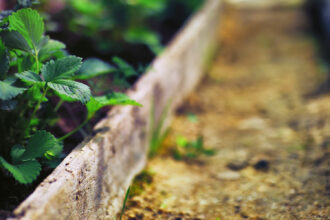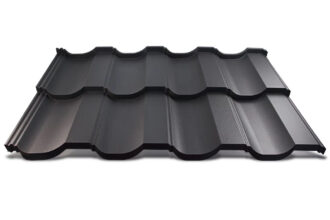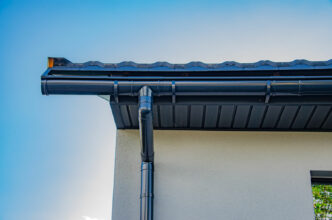For years, in fact, for centuries, natural roofing has been present among various popular types of roofing materials. Natural roofing materials include wood shingles, thatch, aspen chips and green roofs. Each of these solutions has both advantages and disadvantages. Let’s take a closer look at the strengths and weaknesses of natural roofing.
Wood shingles – pros and cons
Wood shingles are one of the oldest known roofing materials – for centuries, wooden planks have been protecting houses against adverse weather conditions. Nowadays wood shingles are used e.g. in log houses, during the renovation of historic buildings (especially manor houses) and also to stylise a house on an old building.
The most important advantages of wood shingles:
- shingle is an ecological solution,
- shingled roofs are quite light – 1 m2 of such covering weighs up to 30 kg,
- it is possible to use a smaller cross-section of individual elements of rafter framing,
- high durability – results from the fact that a significant part of boards is covered with other boards,
- long service life of shingle roofing,
The disadvantages of wooden shingles:
- installation is labour-intensive and takes a lot of time – on an average-sized roof, the installation of wood shingles takes about 2 weeks,
- it is necessary to preserve the roof and perform regular care and maintenance works,
- wood is susceptible to fire,
- proper protection of shingle roofing involves additional costs.
Thatch – pros and cons
Thatch – thatched roofing – is one of those natural roofing materials that we associate with an old, idyllic rural landscape. Nowadays, thatch roofs are used to cover houses styled on old buildings, renovated manor houses or highlander cottages.
Thatch roofs have numerous advantages:
- they are a natural, ecological solution,
- they have high aesthetic value,
- thatch provides very good thermal and acoustic insulation – it does not require an additional insulation layer,
- there can be achieved a very good microclimate under thatch – the roof provides ventilation and works as a filter,
- high durability – even up to 70 years,
Regretfully, thatched roofs have also disadvantages:
- the need for regular maintenance – every few years,
- it is also necessary to fill in defects in the reed regularly,
- only roofs with a large inclination angle can be thatched – it should be at least 45 degrees,
- it is quite an expensive solution.
Aspen chip roofs – pros and cons
Aspen chip roofs were very popular in northeast Poland, Prussia and Lithuania during the post-war period. Today, they regain their popularity and are used, for instance, on inn or hotel roofs. This roofing consists of aspen chips, i.e. small planks of around 35–40 cm in length, 10 cm in width and 5 mm in thickness. They are planed from aspen wood.
The advantages of aspen chip roof:
- it is an ecological solution,
- aspen wood absorbs very little water – it has excellent water-tightness and is vapour-permeable,
- its specific smell repels pests,
- it has high durability – up to 40 years,
- it is resistant to fungi and mould,
- thanks to the low weight of aspen chips, the roof structure is not exposed to heavy loads,
- it dampens noise well and protects from heat in summer,
- it is relatively inexpensive.
However, aspen chip roofs also have their disadvantages:
- laying aspen chip roofing is labour-intensive and takes a lot of time,
- the roof must be carefully and regularly inspected and any defects or damage must be repaired on an ongoing basis,
- the aspen chip roofing should not be stepped on,
- fallen leaves should be removed from the roof regularly,
- aspen roofing should be preserved with a fire-proof preparation and an anti-fungal agent,
- if a fragment of the roofing is damaged, its repair may be difficult and in some cases even impossible.
Green roofs – pros and cons
Green roofs – garden roofs – are basically a novelty in the construction industry, often associated with modern and fashionable ecological solutions. However, the concept has been known since ancient times. Green roofs are therefore a technology combining the past and the future.
The advantages of green roofs:
- it is an ecological solution – they are a good barrier to pollution, produce oxygen, absorb carbon dioxide, prevent the formation of heat islands,
- they have high aesthetic values,
- they provide good thermal insulation – both in winter and summer – which reduces heating and air conditioning costs,
- they reduce rainwater run-off,
- they effectively dampen noise.
However, the disadvantages of green roofs include:
- very high weight of the supporting structure – 1 m2 of such roof may weigh up to 500 kg,
- relatively high price of the roof and structural elements of the building with the green roof,
- it is necessary to ensure appropriate conditions for plants growing there, which translates into a large amount of related work.


